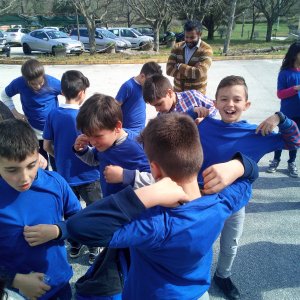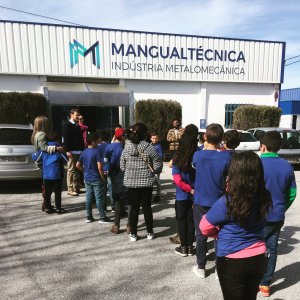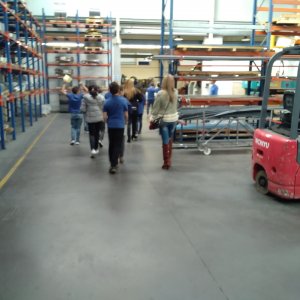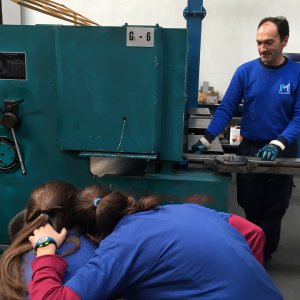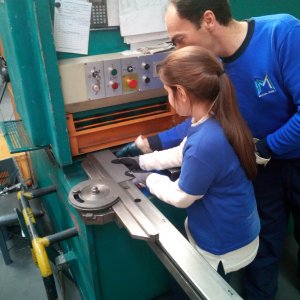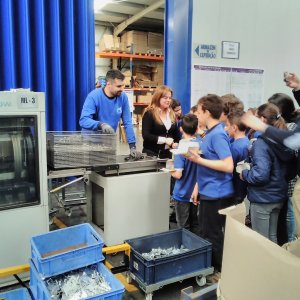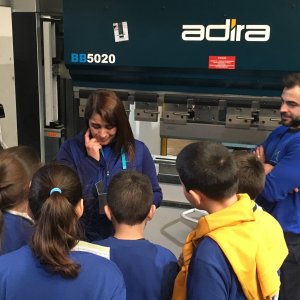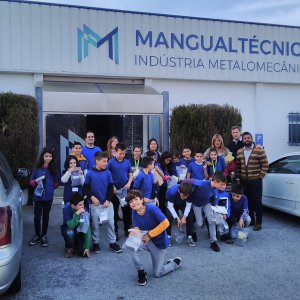

Drilling, bending, folding, threading – visit to MangualTécnica
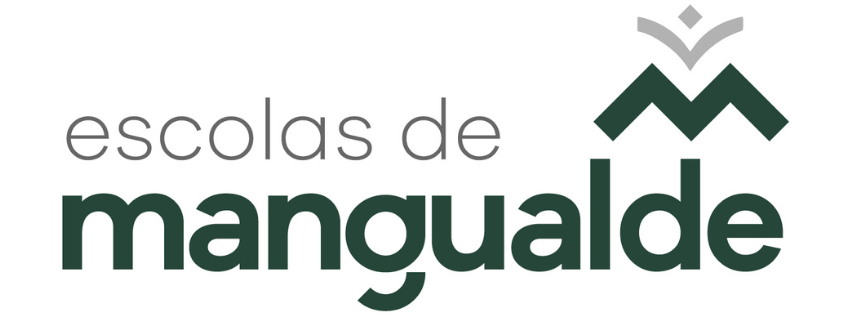
Activity description
In this activity, students engage in a business context by carrying out practical tasks related to those performed at the metalworking company MangualTécnica.
This visit challenges students to construct a metal part, going through several stages/processes of manufacturing (drilling, bending, folding, threading). In addition to working on the part they receive upon arrival at the factory, at each stage of production they solve math problems whose solutions are directly related to the production of parts using different machines in the company.
Worksheet (see Student Guide).
Identification vests.
-
Company T-shirts.
-
Protective equipment to be provided for the use of certain machines (e.g., gloves, goggles).
Meetings with the company to get to know the facilities, discuss curriculum content to be addressed, relevant issues to be raised, as well as logistical matters related to the implementation of the activity.
Development of the Student Guide to be used on the day of the activity, in collaboration with the company.
Student profiles
Essential learnings
Activity guides
Introduction
In a large group, in a company meeting room, the company’s general manager gives a brief overview of the company’s history, the materials they produce, and the different types of raw materials, the manufacturing process at MangualTécnica — focusing on the stations where students will be actively involved — the importance of the company for the region and the country, main clients and suppliers, business strategies, and future planning.
Activity Development
The class is divided into 4 groups, each accompanied by a company staff member and teachers.
Upon entering the factory, each group receives a part that they will work on across 4 stations, using 4 different machines, along with a table of questions to answer at each station (see Student Guide).
Each group follows a clearly marked route, during which a company employee presents and explains the manufacturing process.
Students are asked about organization, logistics, and operations, among other aspects related to the company’s activities:
-
Why are parts identified with a date and a number upon arrival?
-
Why are transport boxes of a certain size used, and why do operators use bearings?
-
Why does the cut made on this part have a dimension X instead of dimension Y?
When the group reaches a station where they must perform an operation on the previously received part, the machine operator explains and demonstrates the purpose of the operation. Then, students are asked to answer the station’s question. The operator highlights all necessary safety precautions and distributes protective equipment as needed (gloves, safety glasses). Students then carry out the demonstrated operation on the part they received.

After going through all the stations, the students obtain the final product (the part with all the operations completed).
Imagining that the part they designed was an order from the company that produces the Farmbot (a machine available at the STEM Academy), the groups are asked to study the best way to ship it to a client in London (England). In the plan they develop, they must take into account aspects such as:
-
Type of box (material and shape)
-
Type of transportation (Mangualde – London)
-
Costs, considering the EUR-GBP exchange rate
Conclusion of the activity
After completing the activity at the company, students are asked, in groups, to reflect on the impacts on biodiversity caused by the human actions necessary for extracting minerals indispensable to the metallurgical industry. They should present a summary of ideas highlighting these impacts, as well as measures to adopt in order to reduce or eliminate them.
Essential learnings
Evidence / Student action
- Discutir a importância dos minerais, das rochas e do solo nas atividades humanas, com exemplos locais ou regionais.
- Formular opiniões críticas sobre ações humanas que condicionam a biodiversidade e sobre a importância da sua preservação.
- Atividade de grupo a realizar na conclusão da atividade.
- Reconhecer o significado de fórmulas para o cálculo de perímetros e áreas de paralelogramos e triângulos, e usá-las na resolução de problemas em contextos matemáticos e não matemáticos.
- Respostas à parte 1 do Guião do Aluno.
Mangualtécnica. (2019). MangualTécnica - Indústria Metalomecânica. Acedido a 12 de fevereiro de 2019 em https://www.mangualtecnicametalomecanica.com
Part 1
During the visit to the MangualTécnica Factory, you will be challenged to work on different machines. But before that, you will need to answer some questions.
Inside the factory, you will follow a clearly marked route to different stations. At each station, the machine operator will ask you questions that you must answer. After your answer is validated, you will perform an activity/operation as described in the table below.
|
Activities/ operations |
Answers | Replies | Notes / Observations |
|
a. Cutting and Trimming |
How many strips of 100 mm × 2500 mm can be cut from a sheet measuring 1250 mm × 2500 mm? How many pieces of 100 mm × 43 mm can be cut from a strip of 100 mm × 2500 mm? |
||
|
b. Punching / Drilling |
What is the area of a hole with a diameter of 4.25 mm? |
||
|
c. Threading |
What is the area of a hole with a diameter of 4.25 mm? |
||
|
d. Cutting and Trimming |
What is the measure of the complementary angle of 55°? If the bent piece was a triangle, what would be the measure of the third angle? |
Part 2
The piece you designed is part of a set to build a Farmbot. Study and calculate the shipment of the designed piece to a client in London. In your proposal, you must indicate and justify each choice. As a guide, you can refer to the following aspects:
-
Type of box (material and shape)
-
Type of transportation (Mangualde – London, truck, airplane)
-
Costs considering exchange rates (raw materials, production, transportation)
-
Profit

